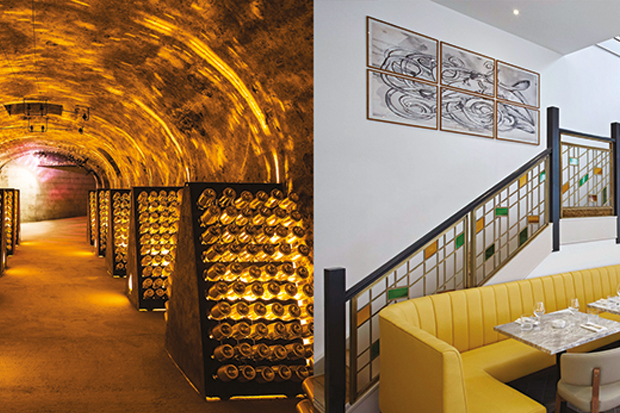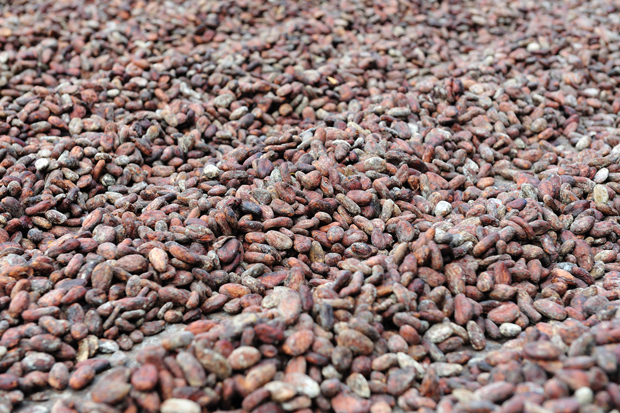In my line of work, I’m lucky enough to go to a lot of wine tastings – press tastings that is – sometimes as many as three or four a day at the height of wine tasting season. They are what a wine-writing colleague of mine likes to call drinks parties. He lurches about from bottle to bottle, being charming to everyone and consuming as much as he can. He never fails to chat someone up and never manages to trouble the spittoons. He rarely seems to file any copy though and I’m beginning to think that he believes they are simply put on for the benefit of his social life.
Actually, these tastings can be hard work. Not hard work as in being a miner or a farmer or a fighter pilot. No, hard work as in being an idle journo who doesn’t like getting up too early but might manage it by noon if there’s the promise of some free alcohol and congenial company.
But a lot of wines do have to be got through at these events, some of them not very nice. Notes have to be written, copy filed, opinions sought and so on. It’s exhausting. Well, can be. No, I mean it. You try tasting 50 white wines at 9 in the morning with a raging hangover.
The supermarkets hold seasonal tastings for the press, often with a hundred or more wines on show. Importers, agencies, generic bodies and independent merchants hold tastings too for press, restaurateurs and sommeliers.
I can sample about 20 to 25 wines before they all begin to smell and taste the same and all my critical faculties go to pot. The great tasters like Jancis Robinson, Michael Broadbent or Oz Clarke can taste hundreds.
It’s said that even if you spit out every wine you taste, you absorb quite a bit of alcohol. Probably the equivalent of a small glass for every 20 or so wines tasted. I remember once going to a tasting in January when I was trying to limit my alcohol consumption. I tasted around 20 wines but religiously spat everything out and felt very smug and virtuous. On the train home however, the poor girl next to me kept glaring at me and wafting away my alcohol fumes as if I was a wino. My protestations that I’d not drunk a drop of wine were completely derided and eventually she felt compelled to move to another seat, condemning me as a complete lush.
There was a terrible occasion when I was the other side of the table somewhere posh – the Reform Club I think – helping at a tasting for our customers when I was working at Berry Bros & Rudd.
For some reason, one of said customers (already well-refreshed when he arrived) walked up to our baffled MD and, over-filled wine glass in hand, began to imitate every character from the Tintin books – his portrayal of the Thomson and Thompson twins being a remarkable tour de force – before pitching over in a heap, mid-Captain Haddock, with a cry of, “Blue blistering barnacles!”
And nobody can forget that scene in the wine/road movie Sideways, when Miles in mid-crise about his life, bridles at not being given enough wine to taste at one particular cellar door and grabs the nearest spittoon and gulps down its contents.
Most tastings are straightforward, with wines simply divided by region or price and into red, white, rosé, sparkling and sweet. Others types of tasting include horizontal tastings (which show wines from the same year but from different producers) or vertical tastings (which show wines from the same producer but from different years).
The most confusing type is the blind tasting where the bottles are completely obscured in foil or cloth or the wines are simply served from anonymous decanters. Here you really have to have your wits about you using colour, appearance, smell, taste and even texture or mouthfeel (dread word) to give hints as to the wine’s provenance.
It’s possible to go even further, though, and have a really blind tasting, where you use the Riedel Sommelier Blind Blind Tasting Glasses. These glasses are beautiful, with an elegant bowl and a long slender stem. They are also black as your hat and completely opaque and it’s utterly impossible to divine the colour of whatever wine is inside. Thus robbed of one of your senses, it’s the devil’s own job trying to work out what wine it is your tasting.
The first time one of these wine glasses was thrust under my beak, I found myself completely at sea. The wine was served chilled, it smelt attractively fruity, was crisp on the palate and was clearly a New Zealand Sauvignon Blanc. Except it wasn’t; it was a (red) Beaujolais. Not my finest moment.
I don’t know if you have been to Dans Le Noir, the so-called ‘Blind Dining’ restaurant in Clerkenwell, London. Here diners eat in the complete pitch black. Phones and cameras are verboten and all the waiting staff are blind. Only the manager has access to an infra-red camera, purely in the interests of safety. It’s a bizarre spot where you have no idea what you’re eating, nor indeed drinking. You are shown pictures of the dishes you have just had once you leave. When I went, I managed to guess the wines I drank correctly (and somewhat surprisingly given my previous form). But I’d never have thought that what I had just chewed over was ostrich steak and kangaroo. The scallops on samphire I guessed right, if only because of shape and texture.
Laithwaite’s Wine got into this sensory deprivation tasting lark only last week when they launched their Tasting in the Dark at Laithwaite’s Live tasting event in London. Consumers were invited to sample wines in a pitch black theatre, guided by staff wearing infra-red night vision goggles. Laithwaite’s see it as a way of experiencing wine through synaesthesia, where senses overlap to create unexpected sensations and potentially change our perception of what is being served.
But if you’re in the pitch black and can’t see what you’re drinking, presumably you can’t see the spittoons either. Not so much a blind tasting as a blind drunk tasting. My old soak of a colleague would love it.
The post Blind tasting appeared first on The Spectator.
Got something to add? Join the discussion and comment below.
Get 10 issues for just $10
Subscribe to The Spectator Australia today for the next 10 magazine issues, plus full online access, for just $10.












Comments
Don't miss out
Join the conversation with other Spectator Australia readers. Subscribe to leave a comment.
SUBSCRIBEAlready a subscriber? Log in